With almost 30 years of experience in VFX and CG, Kay Delventhal has worked in many studios and on a large number of projects. He tells us in detail about his work on the Netflix series, Barbarians:
What is your background?
My background is engineering. I studied Data-Technology in Hamburg, Germany and Control-Engineering in Portsmouth, England.
In 1993 I moved into media production and became a trainer for Alias PowerAnimator, shortly after that a Virtual Studio Product Specialist. That’s where I helped to set up the first Virtual Studios for the BBC in Whitehall.
When Alias released the first version of Maya I was one of the early adopters and I am still using Maya whenever possible. In 2000 I also started to do compositing. First with flame and combustion. Later, I switched to Shake and eventually to Nuke. I try to do a bit of composting on my shows, if possible.
As an artist I consider myself a generalist, which means I am a Jack-o-Trades in CGI. And this hands-on experience is the backbone for my VFX Supervision.
How did you get involved on this show?
I met with Sabine de Mardt (EP Gaumont) and Andreas Bareiss (EPs Gaumont), talked about the challenges of this show and eventually Gaumont contracted me as HOD for the VFX Department.
How was the collaboration with the showrunners and the directors?
The collaboration on set between the two directors, Barbara Eder and Steve St Lege, was very good. They had a tight shooting schedule, but still gave VFX the time we needed to do our data acquisition. VFX were thoroughly prepared before the shoot, also due to great collaboration with all Heads of Departments (HOD).
During the postproduction I worked even closer with the showrunners Jan Martin Scharf and Arne Nolting. They were also the link to Netflix and their creative team. During the Covid-19 shutdowns I spent many, many hours with Jan Martin in video calls and online approval sessions. It was a great experience to work with him and with his help we managed to nail our VFX budget and also kept the VFX schedule. He is fun and focused at the same time, our captain in rough seas.
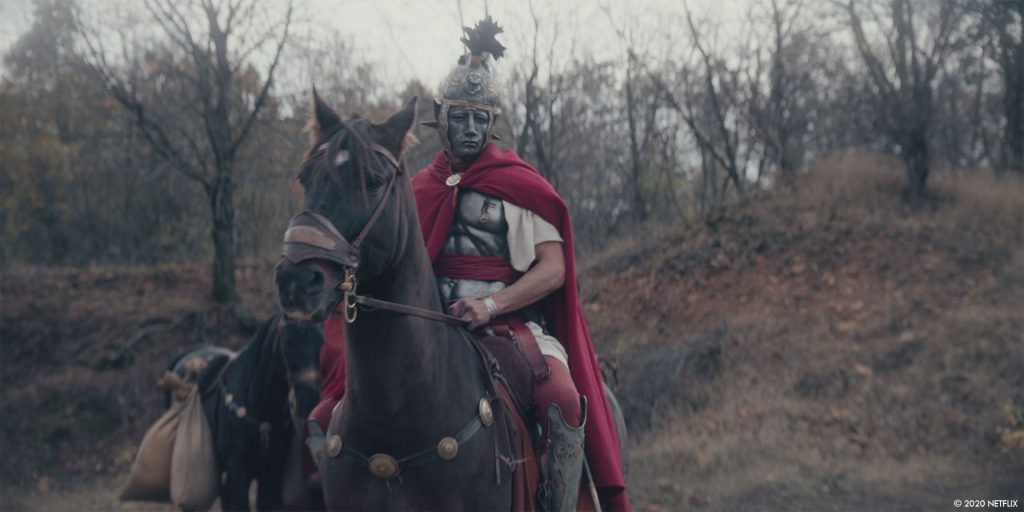
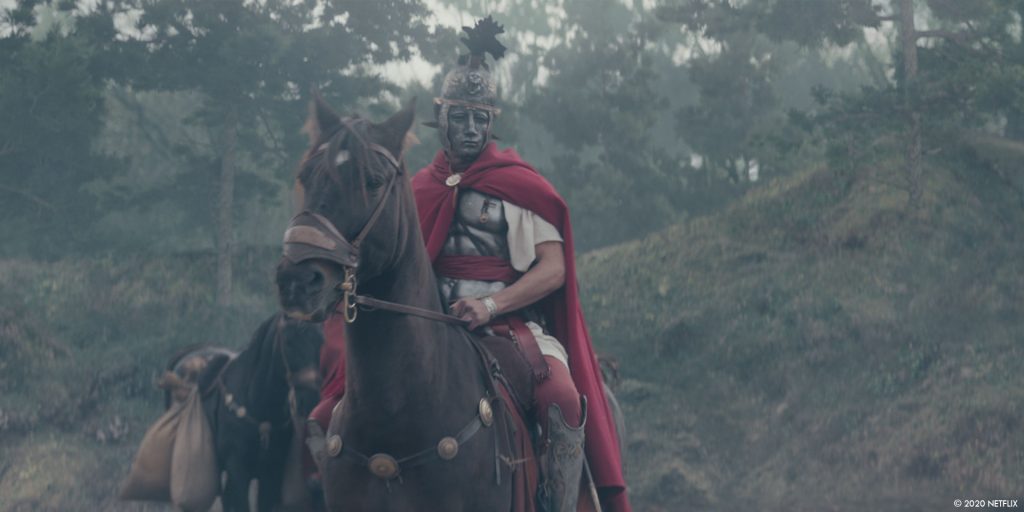
What were their expectations and approach about the visual effects?
The directors had a clear vision of what they wanted to see in VFX. We were planning our VFX in close cooperation with all other departments. For example, we discussed blood-VFX in detail with our stunt coordinator Richard Rayan and thanks to his suggestions, we were able to save time and money on VFX.
How did you organize the work with your VFX Producer?
Our VFX Producer Annabelle Troukens joined the VFX team at the end of October 2019, when the end of principal photography came in reach. She helped with our on-set VFX work and the idea was to breakdown all VFX, so we could start pulling them in the end of November… that did not really work out.
We were double banking and shooting two main units at the same time. In the last couple of weeks, the VFX Department was so busy, that only with Annabelle’s help we were able to finish our extras and element shootings.
After principal photography, we worked together on VFX spotting and the breakdowns. Eventually Annabelle focused more on analyzing and comparing the bids and I organised set- and meta-data and talked to directors and the showrunners about the specifics on some VFX shots.
Editing took a bid longer than initially intended and then we got hit by Covid-19; therefore we had to redistribute some of our VFX shots to additional vendors. Annabelle stayed on until we redistributed the work and finalized the VFX budget.
It was an intense time, and I was very lucky that Annabelle was by my side when we were going through rough waters. Thank you Annabelle!
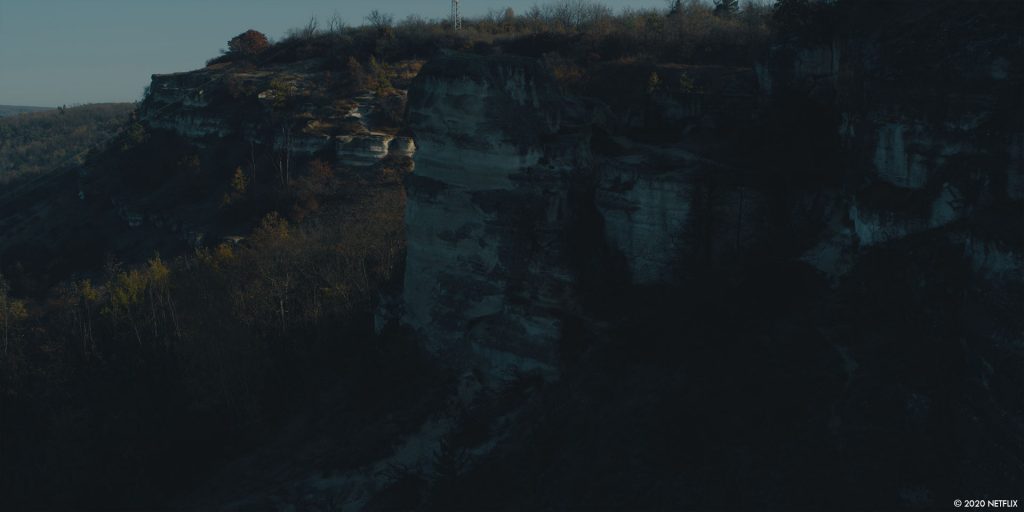
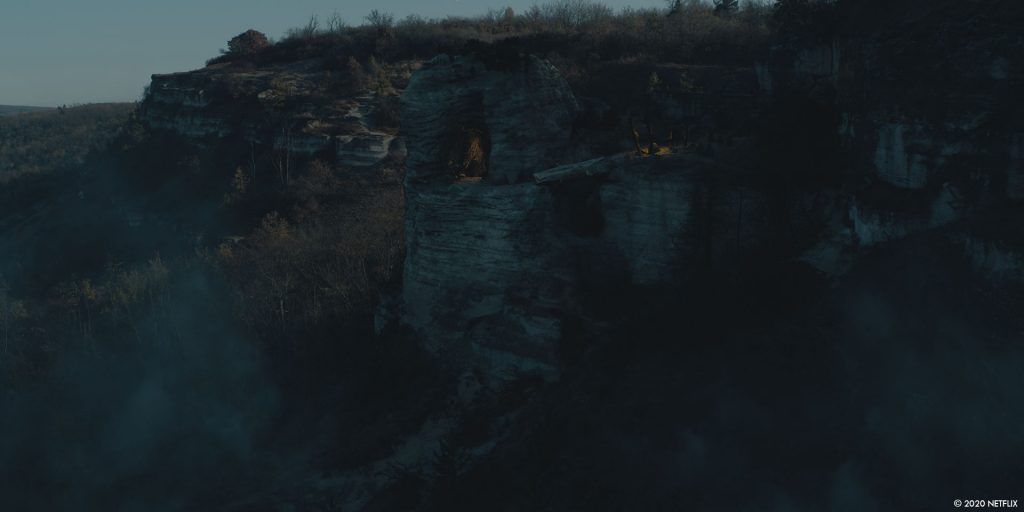
How was your approach for a historic series like Barbarians?
VFX was working very closely with the Art Department, Armorer and Costumes, in order to stay true to the artistic vision based on historical research. We used their artwork and design materials as well as thousands of set photos to get the right look and feel for our VFX.
Can you explain in detail about the creation of the various environments and especially the Roman camp and the village?
In order to do the set-extension as planned, we did a thorough location scout. The locations got Lidar scanned and if they were changed in order to follow the storyline, we re-scanned them. The “Roman Camp” got dismantled and the location was then transformed into “the Battlefield”, for example, so we Lidar-scanned that area twice.
As previously mentioned, we took an enormous amount of reference photographs and surveyed all locations also with drones. Some locations like Runa’s Cave could only be checked by drones and we used photogrammetry in order to reconstruct them for VFX.
The “Barbarian Village” was used mainly as the “Cheruscan Village” and got redressed by the Art Department when used for other tribes. The “Cheruscan Village” needed mostly additional smoke, some additional extras to populate the village and a set-extension to cover-up a road and a tree nursery, which were visible in some angles.
The “Roman Camp” was our biggest set-extension and took the longest to find a layout that felt as if the camp could host 15000 Roman Soldiers. At the same time, it should not feel too small nor too big. That took a couple of iterations including input from the Netflix Creative Team, to get the size and the details just right. In the end we are very happy with the result.
The set-extension for the “Battlefield” was much more straightforward. And once the showrunner felt happy with the size of the army visible in frame, it was very rather uncomplicated to finalize that environment.
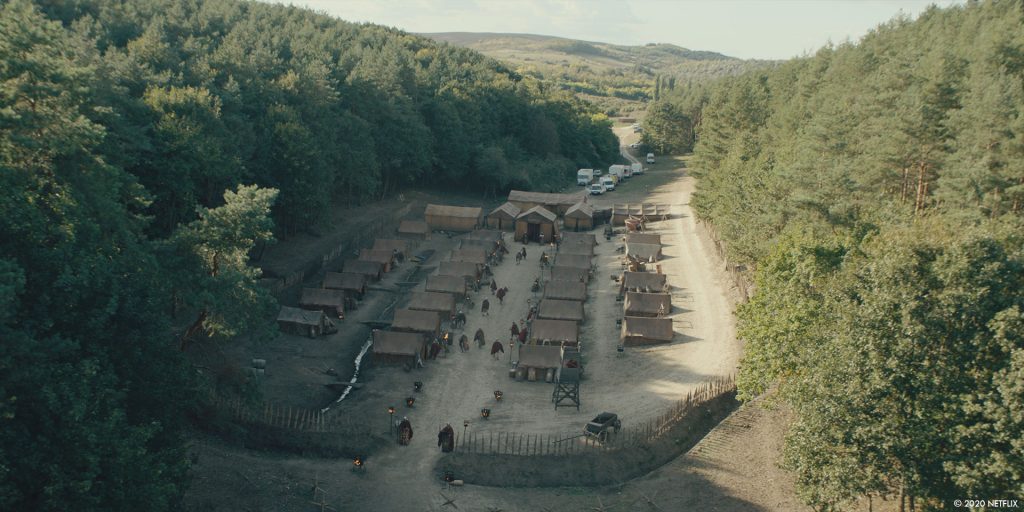
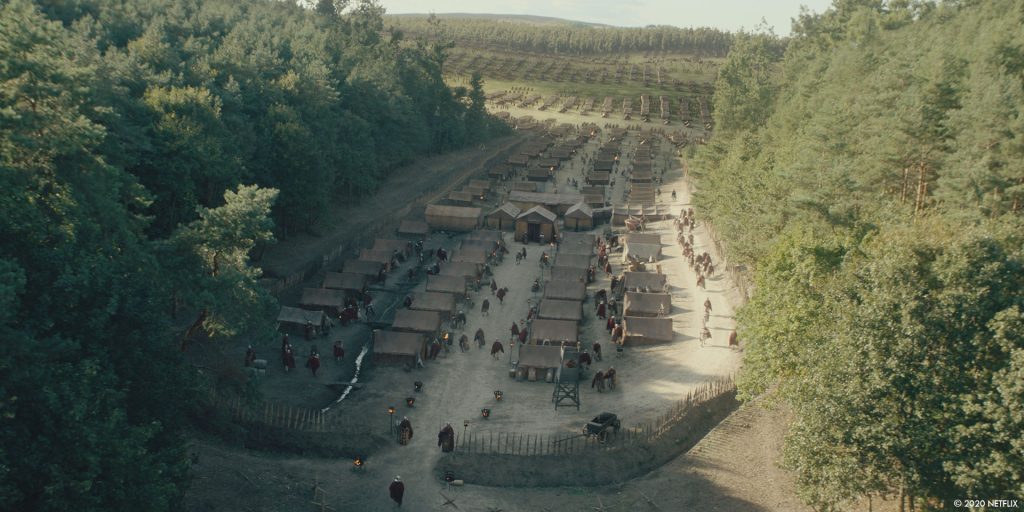
What kind of references and influences did you receive to create the camp and the village?
Art Department and Costumes provided us with a wide variety of references, including actual set-pieces, weapons (metal and stunt versions) and costumes.
How did you work with the SFX and stunt teams?
One of the first people I met on this show was Richard Ryan the Stunt Coordinator. I worked very closely with him, because in the first breakdown, done before my time, had way too many blood-enhancements.
Richard consulted us and choreographed the fighting sequences in a way that they looked awesome and did not always need additional CG elements or blood. Many shots got enhanced by using SFX blood in camera. With his help we were able to balance our VFX Budget for blood and blades.
As SFX rain, fog or fire often hit their natural boundaries, the VFX department worked closely with Christian Stangassinger, the DOP and the directors in order to literally fill the gaps. On such a big set, as used for Barbarians, the SFX team was happy to get some support from VFX to cover such a large area.
The firebars, to give you an example, which were used during the battle scenes on set created so much heat that even the stunt people could not bear it and had to keep their distance. So, we knew during shooting that VFX will have to put soldiers closer to the flames or close gaps between extras and stunt people.
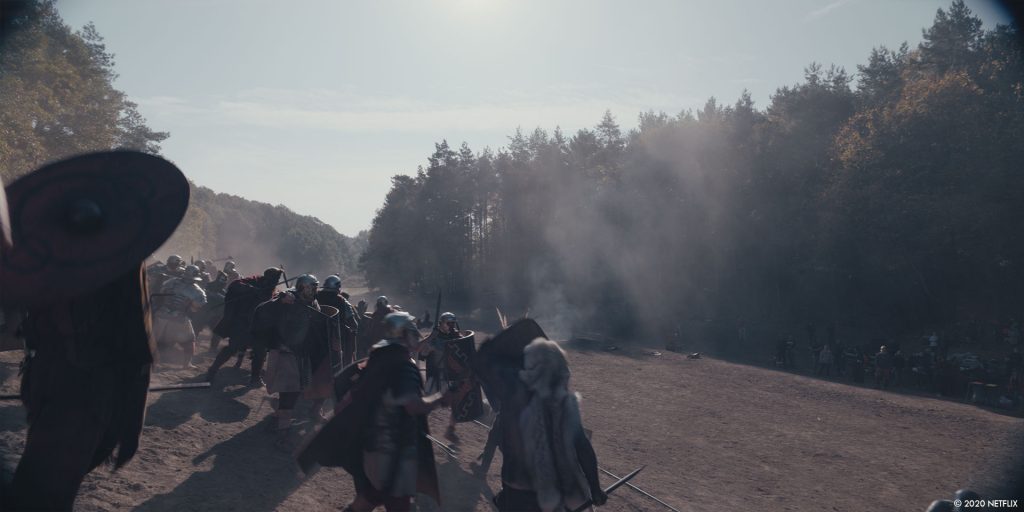
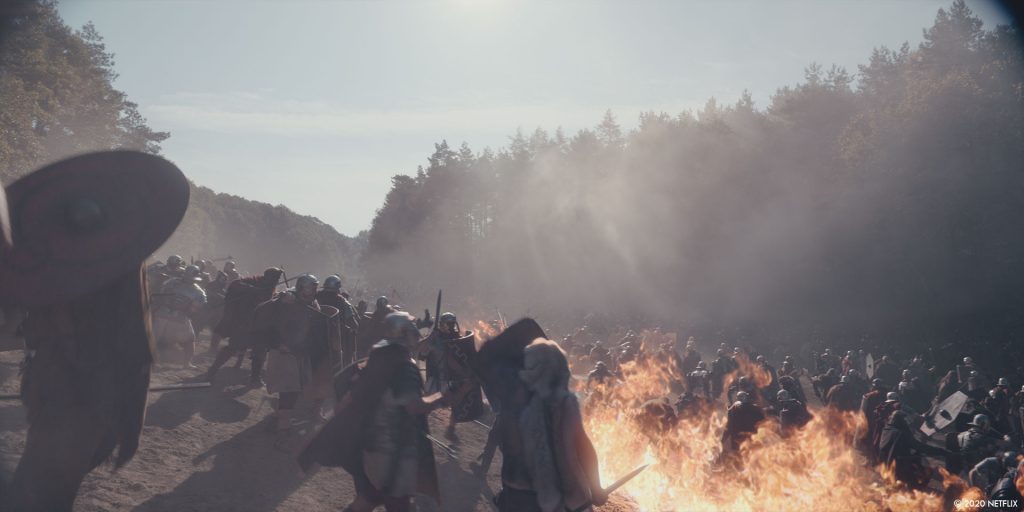
The series is really gory. How did you enhance this aspect?
Even though Richard, the Stunt Coordinator, helped us to reduce the amount of CG blood, VFX ended up adding blood to many shots in post production. In order to do that we shot an extensive library of blood in front of greenscreen.
Many VFX are probably invisible to the viewer, as it is difficult to actually spot the difference between SFX blood and VFX blood. But as we progressed with our VFX production, some of the in camera blood SFX didn’t work quite as well as we anticipated. We even had some shots where SFX blood needed to be removed and replaced with VFX blood. One example of this would be the beheadings, which got very gory through VFX thanks to Mr. X.
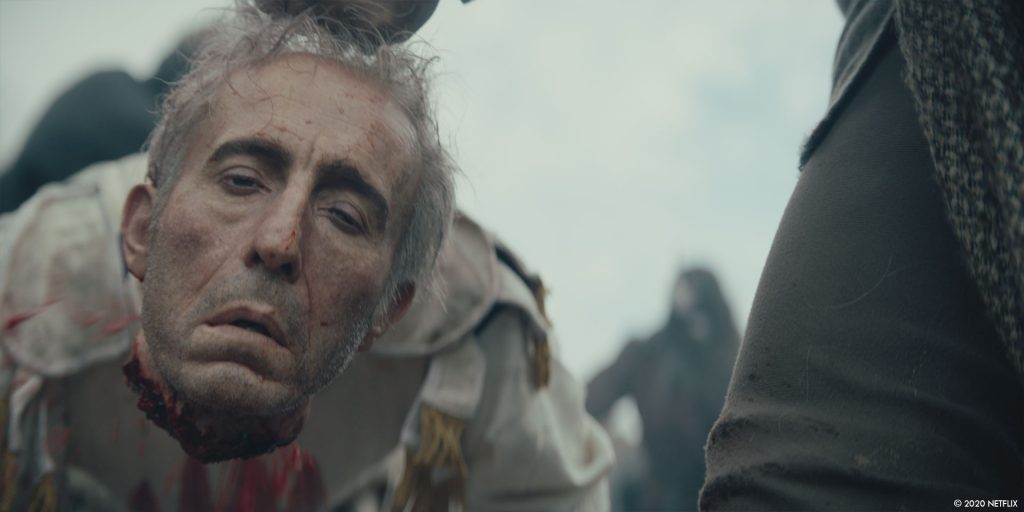
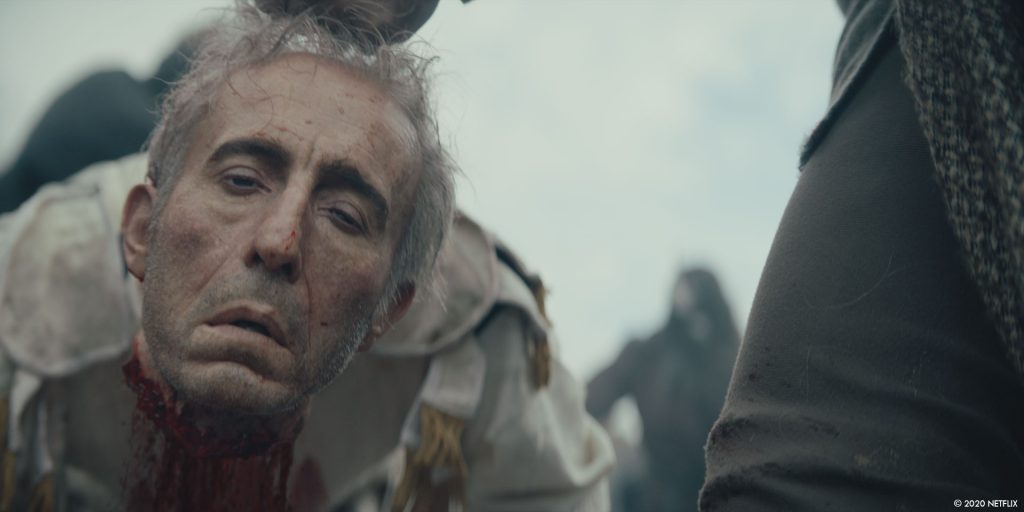
The cinematography is really beautiful. Did you help for this part such as the fog or the lighting?
Our DOP Christian Stangassinger, could convince everybody to shoot Barbarians with special de-tuned anamorphic lenses. They are a big part of the wonderful look of the show. I had a particularly good and close relationship with Christian and as Barbarians uses lots of atmospheric fog, it was clear from the very beginning that VFX would be needed to consolidate fog-consistency over shots and sequences. It is in the nature of fog that the slightest wind changes it and these obvious continuity differences needed to be fixed in post. And we fixed a lot of them.
Christian also involved me in most of the drone shootings, so that I ended up directing the 2nd unit for the drone shots of Runa’s Cave, the Roman Camp and the Cheruscan Village establishers.
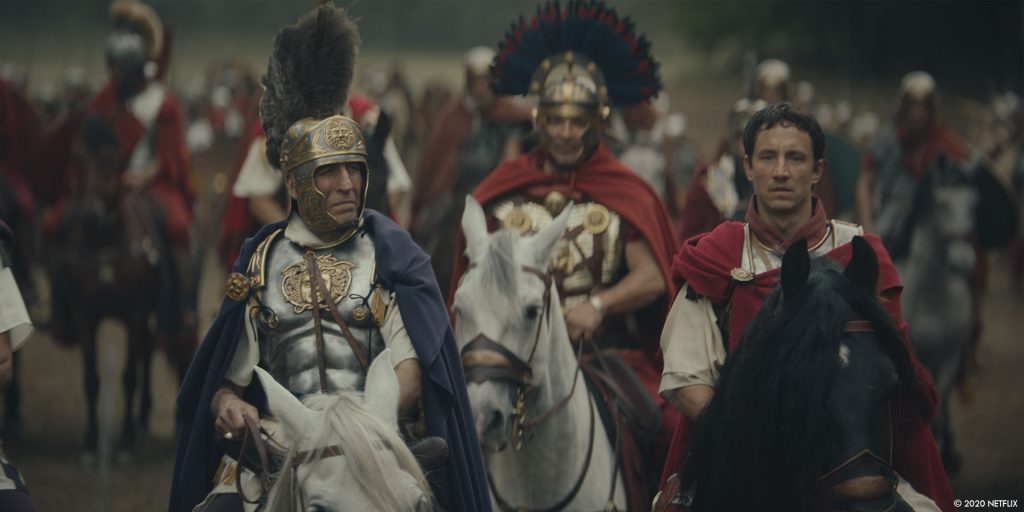
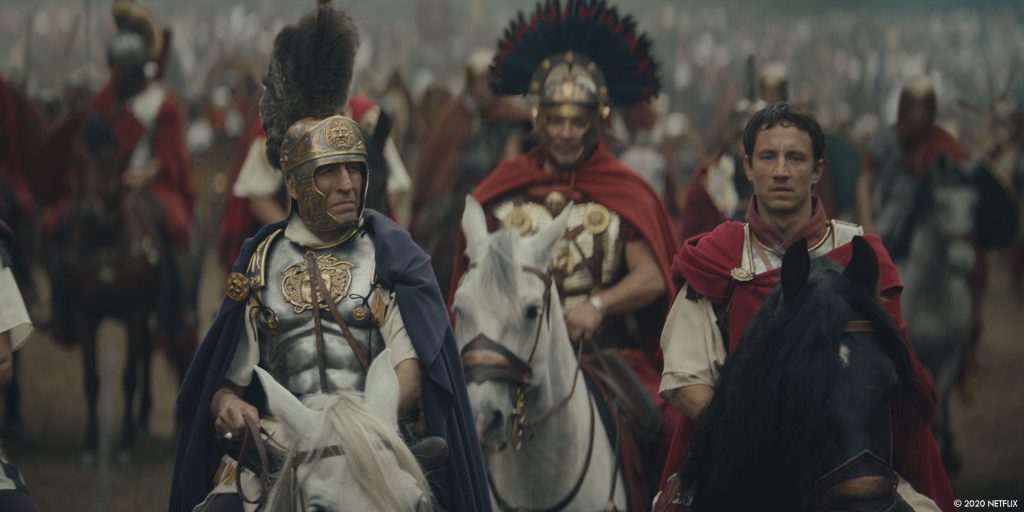
Can you elaborate about the creation of the Roman army?
The VFX department organised multiple photo-shooting sessions in the base camp. We captured all extras (Roman and Barbarians) in costumes before and after they were on set. That gave us a vast library of photographic reference, which was used when we created the digital extras for the crowd simulation. We also shot fight reference footage and green-screen footage of Barbarians and Roman Soldiers. Which was used for compositing as well as for reference purposes.
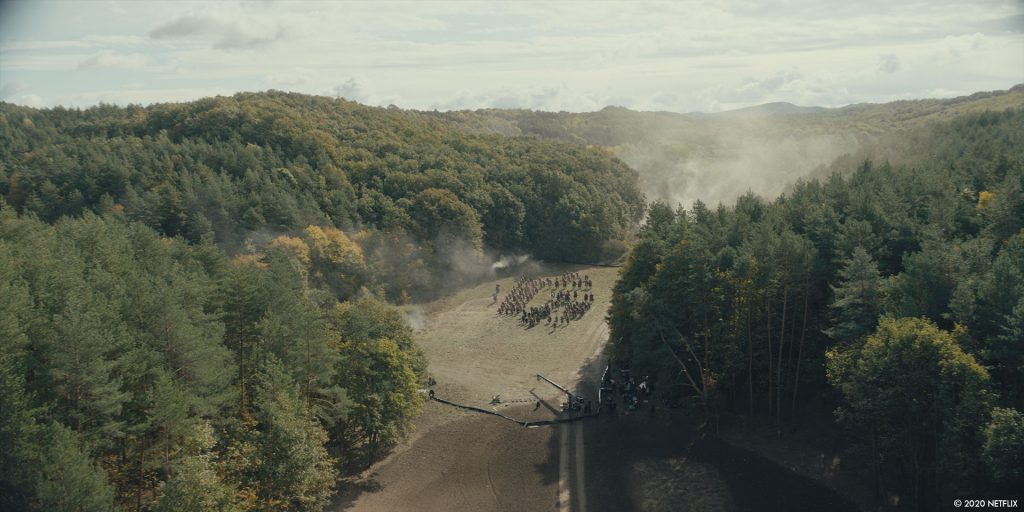
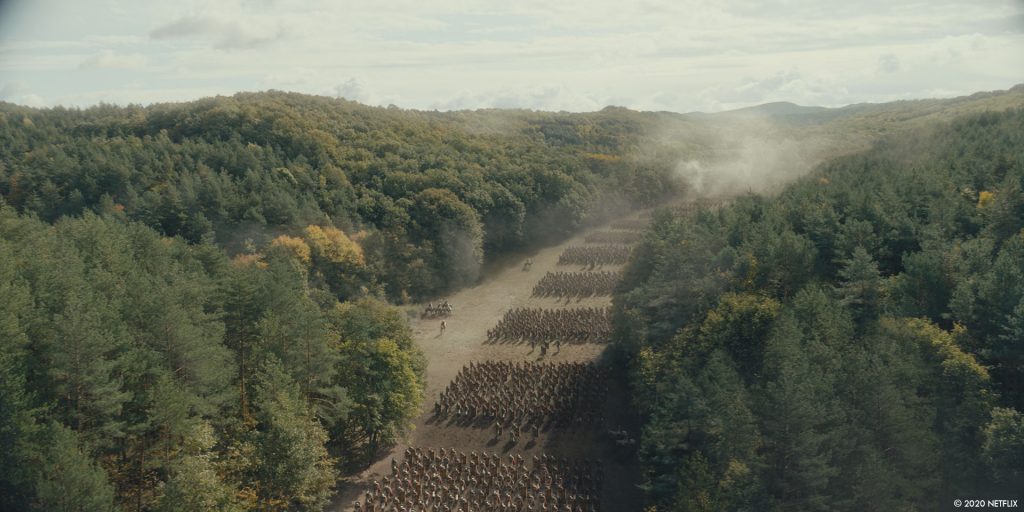
How did you animate the crowd?
Mr. X used Massive Software for the crowd simulation. As they have used it before on other projects. Which was one of the reasons why we chose Mr. X as a VFX vendor on this show. For our scenes we needed a limited amount of movements: marching, standing, fighting and reacting to fire.
The last one – ‘reacting to fire’ – was the one that turned out to be most challenging and took the longest to get it just right. The other types of movement were not too difficult; only the fighting took a bit of tweaking here and there. In the beginning the CG extras moved their heavy shields too quickly and too far up.
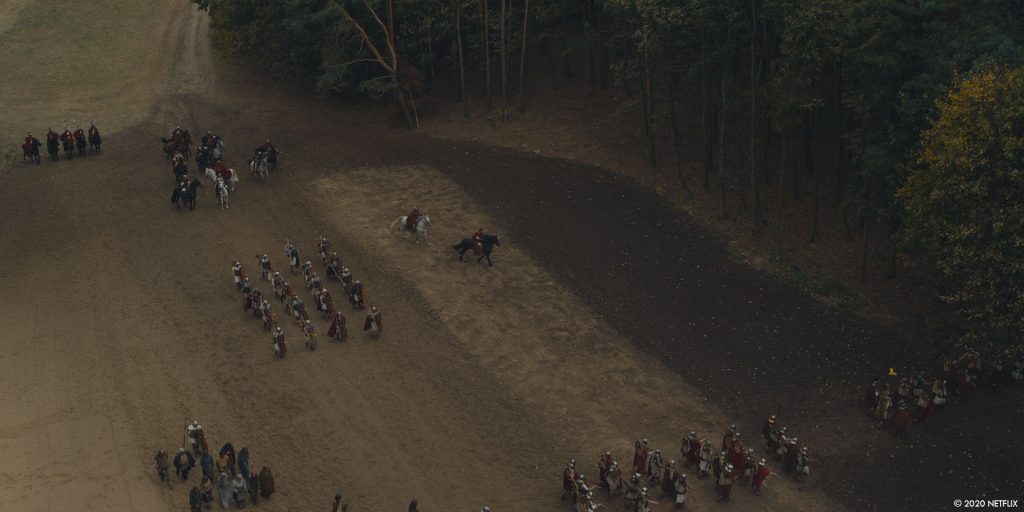
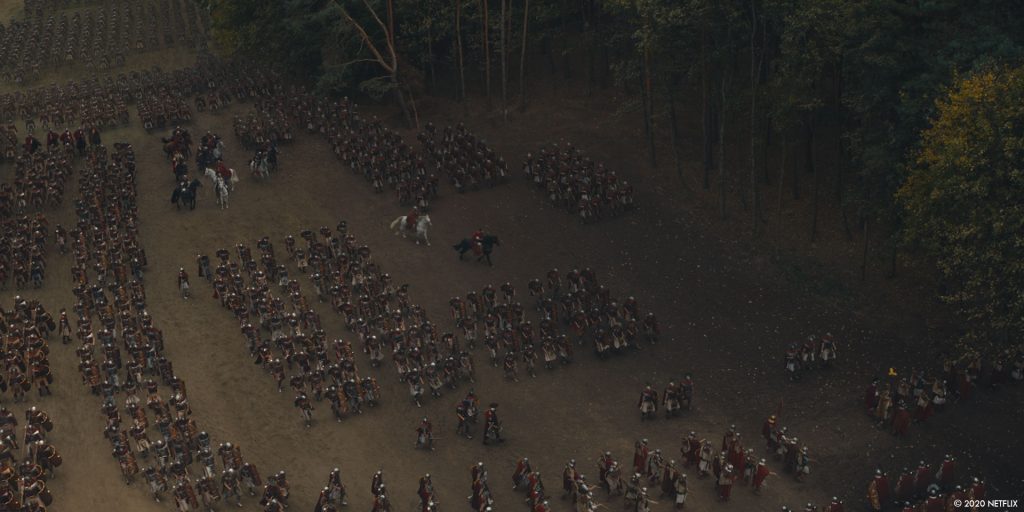
The tribes are using fire against the Roman army. Can you tell us more about the creation of this FX?
The fire was definitely a challenge. For the fire we also shot a massive library of fire-elements in Budapest, outside our studio. For the close ups or shots with a long lens we used mainly the fire-library. Still for some shots we needed to create simulated fire. This simulated fire was mostly used in the wide shots.
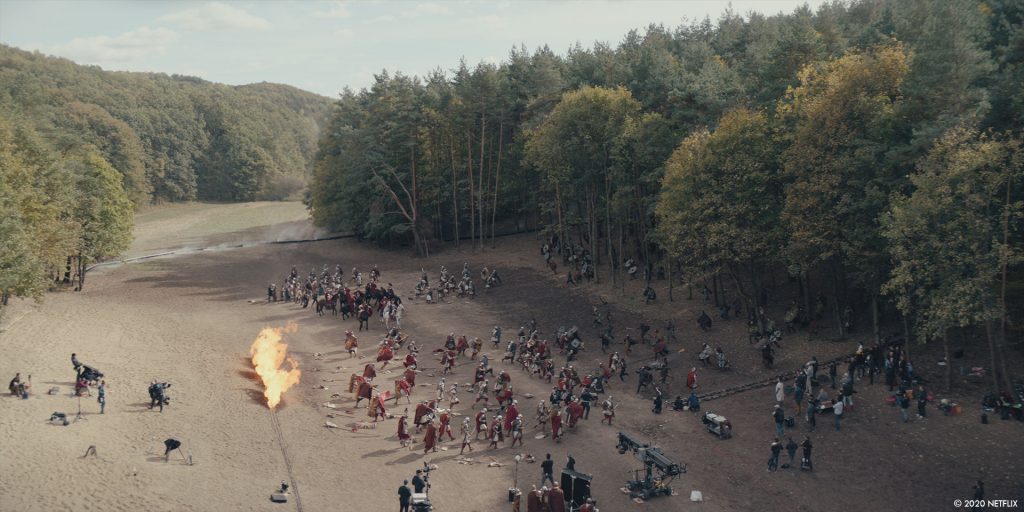
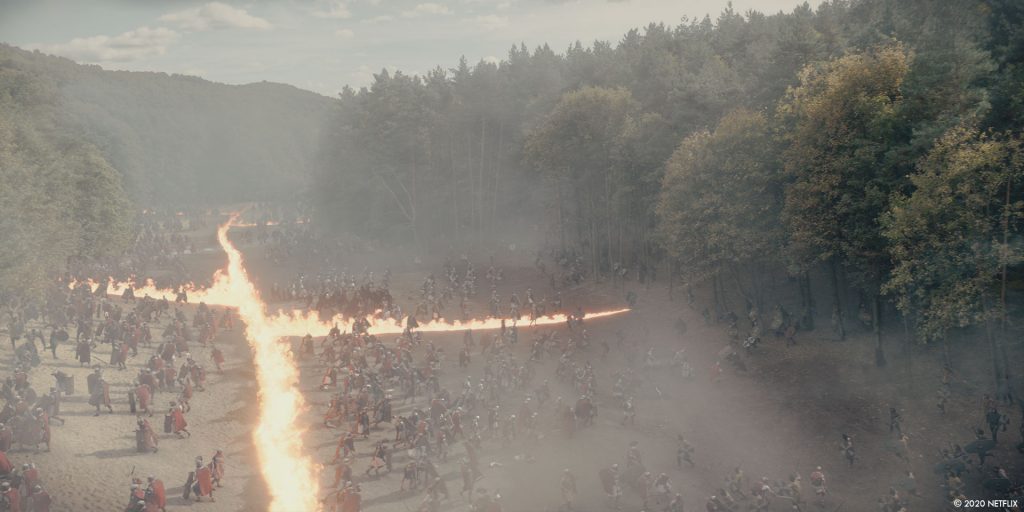
During the final battle, the tribes are using trees to split the army. How did you create these shots?
Most of the falling trees are actually shot in-camera with courtesy to the stunt team. We merely removed wires and fixed smaller issues.
We do have a nice top-shot where we see a couple of trees that start to fall. Steve St Leger had a clear vision of this shot from the beginning. The trees were added to a back plate with a drone and then simulated. The trees and leaves were simulated by Mr. X.
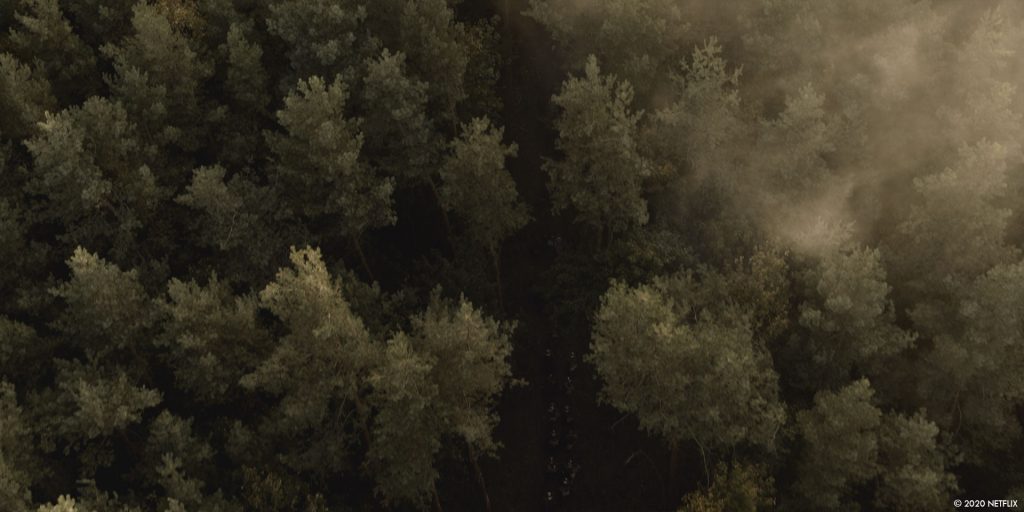
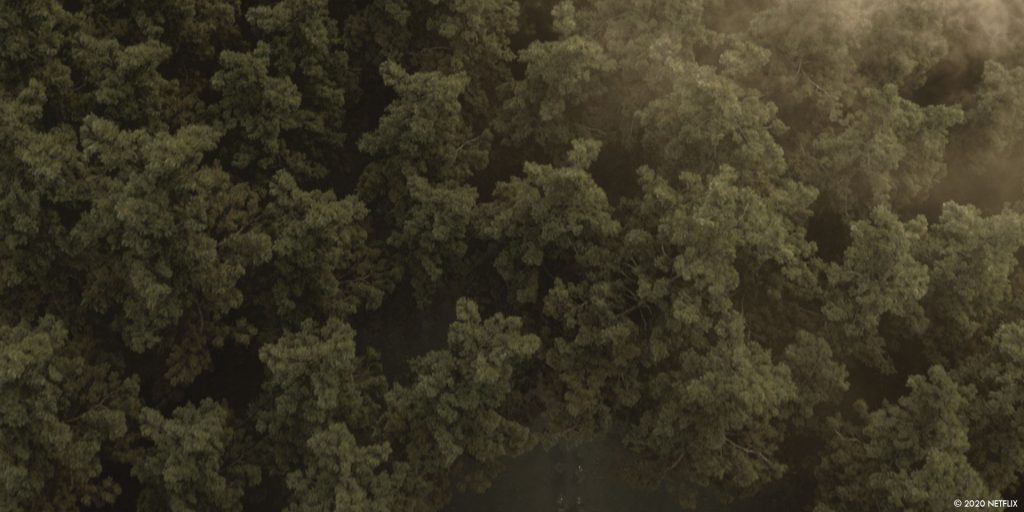
How did you choose the various VFX vendors?
When choosing VFX vendors, Annabelle and I would always work very closely with the producers.
In Spring 2020, when the Covid-19 lockdown started to have an impact, we started to look for additional VFX vendors to support Mr. X. Gaumont signalled us that they would prefer close proximity of the new vendors. So we started looking in Germany and worked with two VFX vendors in Berlin: inHouse VFX and RoyalPenguins.
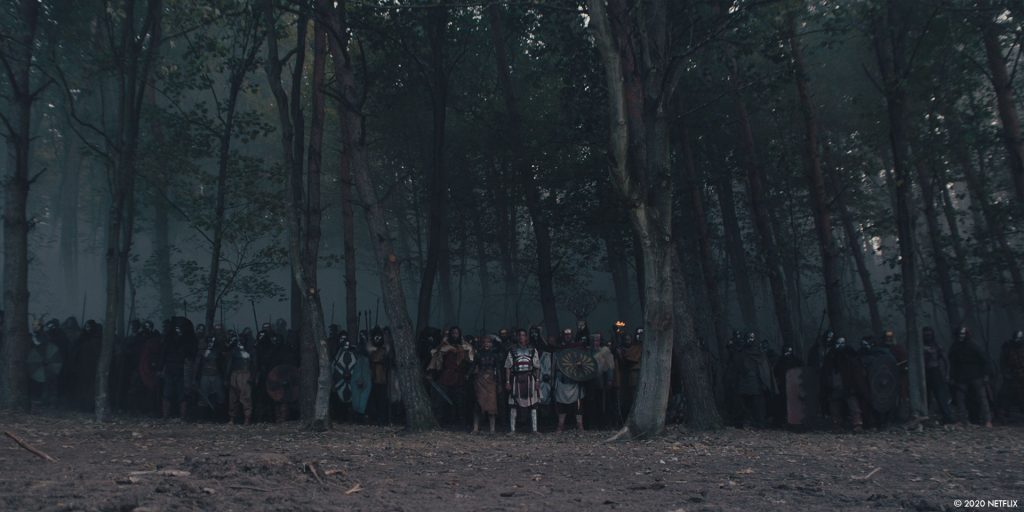
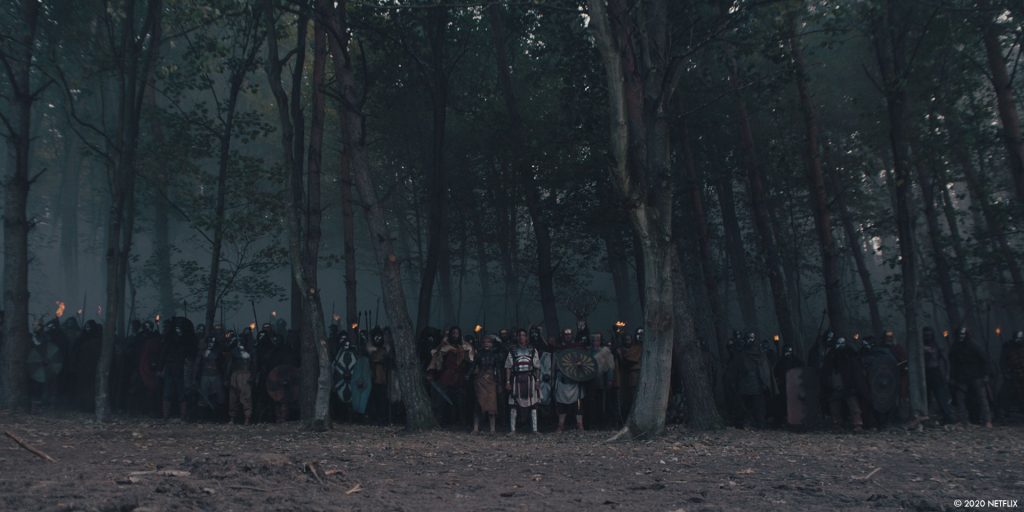
How did you split the work amongst these vendors?
Mr. X was our biggest vendor and, initially, we planned to do most of our VFX with them. But from the very beginning I had a plan to do some types of VFX, in grading.
An example of a VFX, which we preferred to do in grading, was a blood-shot in the eye of our female main character Thusnelda, played by the fabulous Jeanne Goursaud . The VFX was called “Thusnelda’s Eye”. The blood-shot needed to be consistent in terms of colour and look in over 45 shots. This was easily done in grading. It was better for the VFX budget. Another type of VFX that we moved into grading, whenever possible, was fog-continuity. And we had quite a few of them.
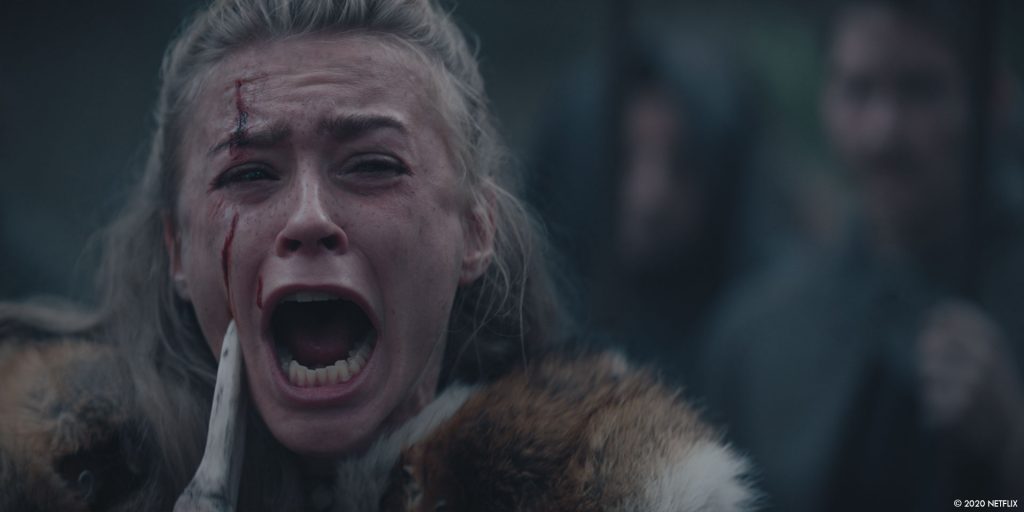
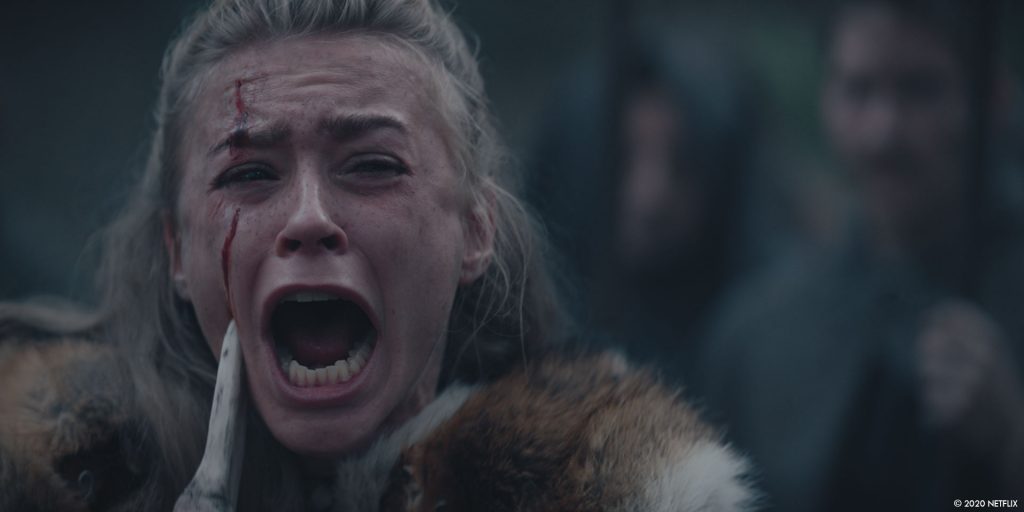
Can you tell us more about your collaboration with their VFX supervisors?
As Mr. X was handling most of our difficult VFX shots, I spent lots of time with their in-house VFX supervisor David Crawford. The collaboration was easy and seamless.
We used Shotgun Client Review and CineSync for our daily and weekly meetings. Which is a well-tested and reliable way of working together. The only caveat when working across the Atlantic is the time difference. Which usually means the European team has slightly longer hours. With our other vendors Arri, inHouse VFX, and RoyalPenguins, the collaboration was quite easy and straightforward.
Which sequence or shot was the most challenging?
We always knew that our CG crowd scenes are probably the area where we will spend most of our VFX budget and anticipated a good deal of challenges. But looking back, I have to say that the “Roman Camp“ gave us the biggest headaches. We started the design and layout in 2019. But eventually they were amongst the shots that got finished last. Getting the layout, the details and the size right took more iterations than we initially anticipated.
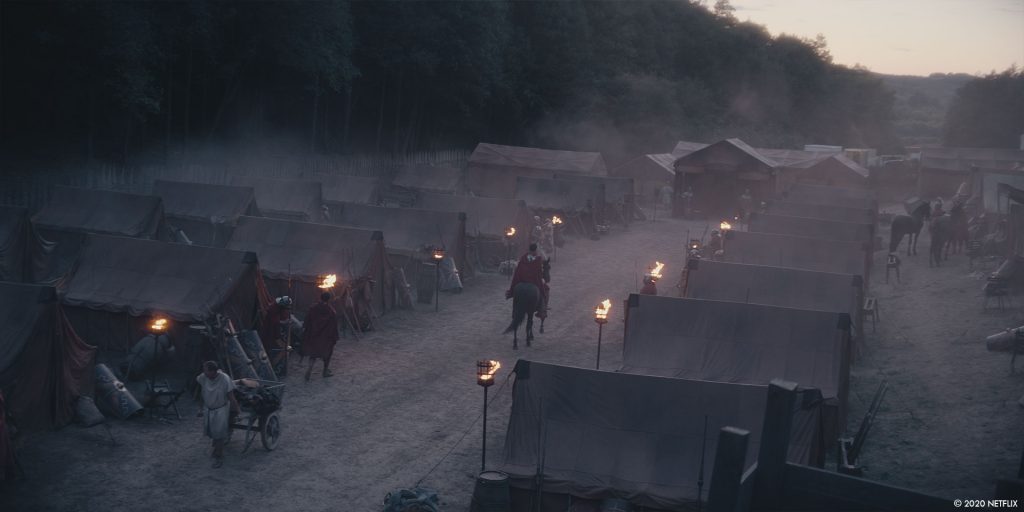
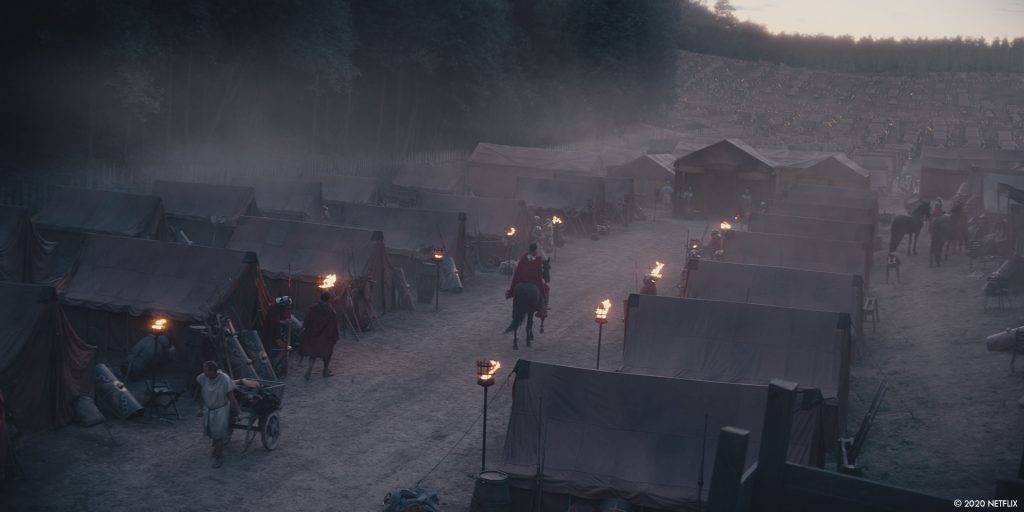
Did you want to reveal any other invisible effects?
There are some shots, when the final battle begins, where Mr. X added more Barbarians to the scene. For example, when Armenius (Laurence Rupp) and Thusnelda (Jeanne Goursaud) are charging out of the forest. If you did not know that these shots are VFX, I would bet that even people from the trade, could not tell, which shots actually contain digital extras.
Is there something specific that gives you some really short nights?
When we were shooting double banking (with two main units at the same time) we had awfully long days. One director would start shooting early in the morning to catch first light and the other director would shoot night scenes. Which meant that some members of the VFX team stayed a on set for over 16 hours. Apart from that, editing changes gave us long days. The bidding process on this show was in comparison long.
VFX wise the Roman Camp and the crowd simulation were the two areas that became the biggest obstacles.
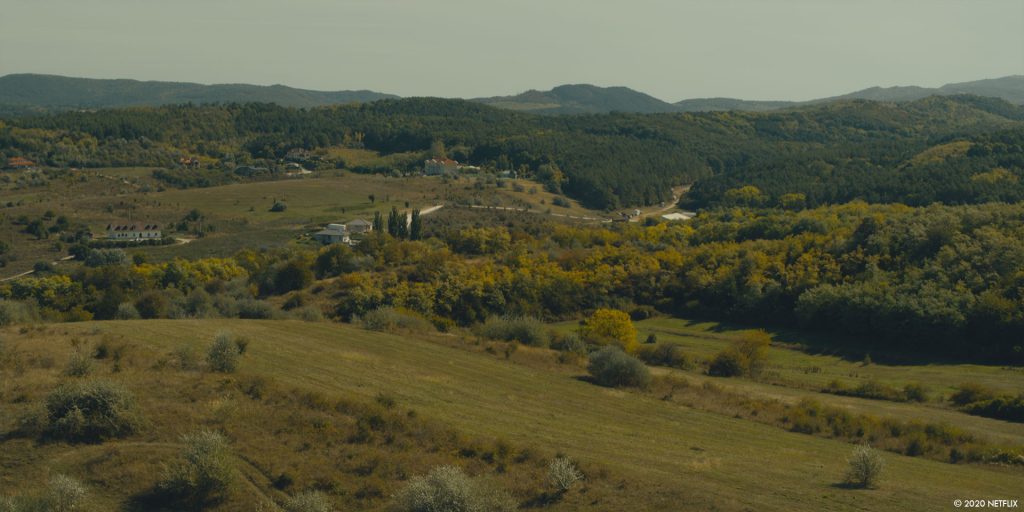
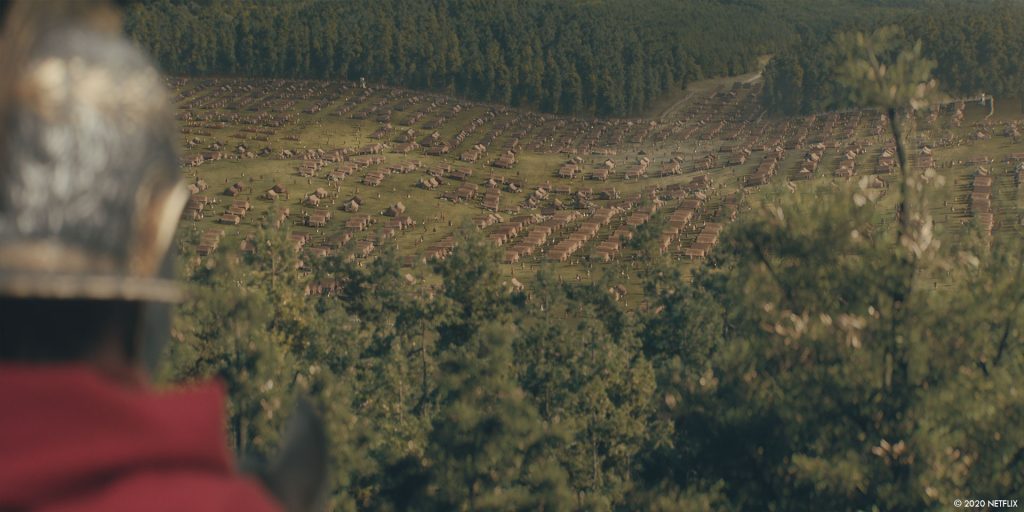
What is your favorite shot or sequence?
The beginning of the battle is my favourite part. I am very happy how we enhanced the scenes, where the Barbarians are charging towards the Roman soldiers. And the look of the fire makes the viewer feel the heat that the Roman must have felt back in the days.
What is your best memory on this show?
Being on set in the middle of the night, shooting battle scenes with 150 extras and 50 stunt men and women are screaming and running into each other. Which looked pretty damn cool especially as we often had a very atmospheric and moody set filled with fog and lit by flying moons.
How long have you worked on this show?
I joined the pre-production just two months before principal photography in June 2019 and we delivered the last VFX shots in August 2020. So overall, I was on the show for 14 months.
What’s the VFX shots count?
We had about 418 VFX shots in all six episodes. The work split was: Mr. X 229, Arri 110, inHouse 59 and RoyalPenguins 20.
What was the size of your team?
Overall we had seven crew members in our VFX Team. Apart from me, there was Annabelle Troukens our VFX Producer, Csongor Dombovar and Orban “OG” Gergely our on-set VFX data wranglers and our VFX editors Rene Bernbeck, Alex Griffith and Lorenz Jahn.
For Lidar scanning and our VFX photo-shootings we hired local companies from Budapest.
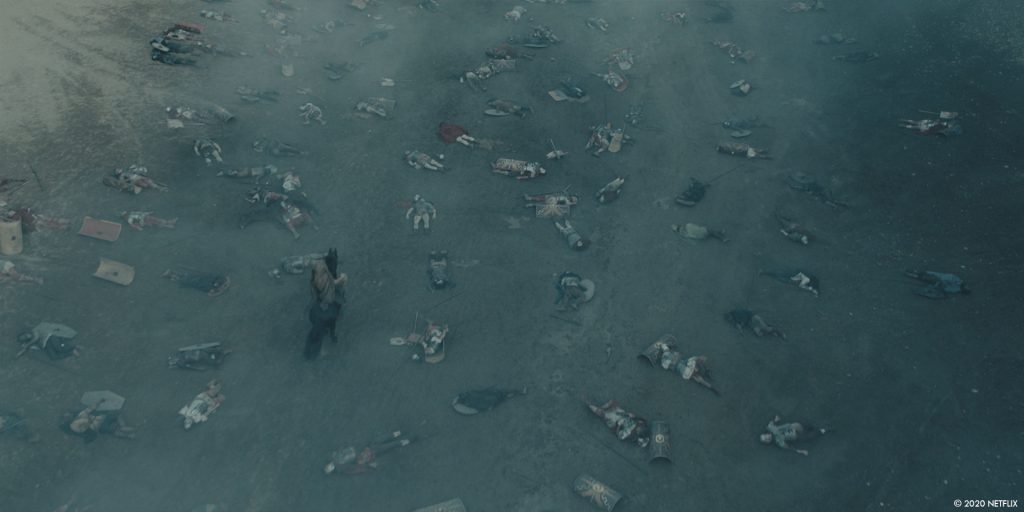
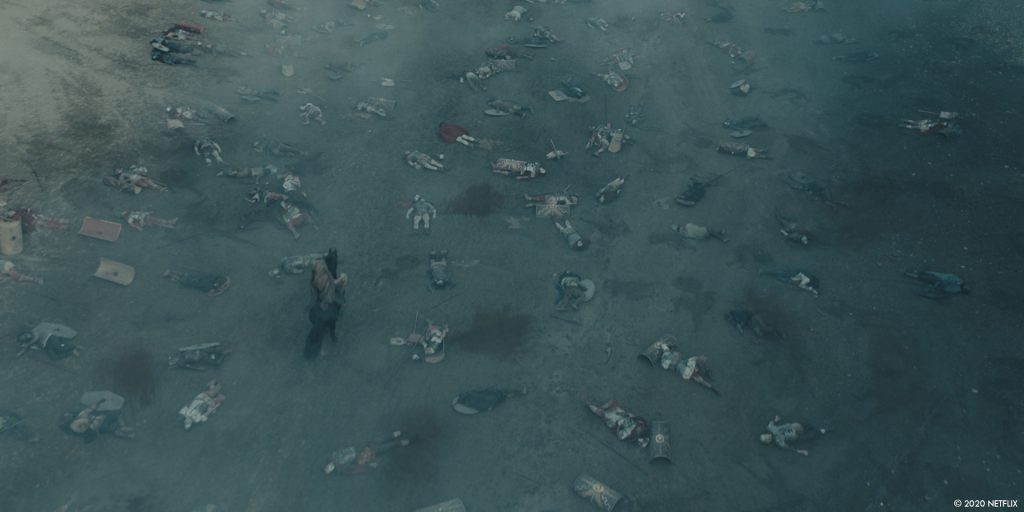
What is your next project?
The Barbarians was quite an intense project, so I am taking a bit of a break and some personal time. I am currently catching up on AI/ML (Machine Learning) and Virtual Production technology which are fields of special interest to me. And I am open to new projects 🙂
What are the four movies that gave you the passion for cinema?
Sure! Not an easy choice but I think I would list these:
· Bullitt (1968)
· Get Carter (1971)
· The Abyss (1989)
· Judge Dredd (1995)
A big thanks for your time.
WANT TO KNOW MORE?
Mr. X: Dedicated page about Barbarians on Mr. X website.
© Vincent Frei – The Art of VFX – 2020




